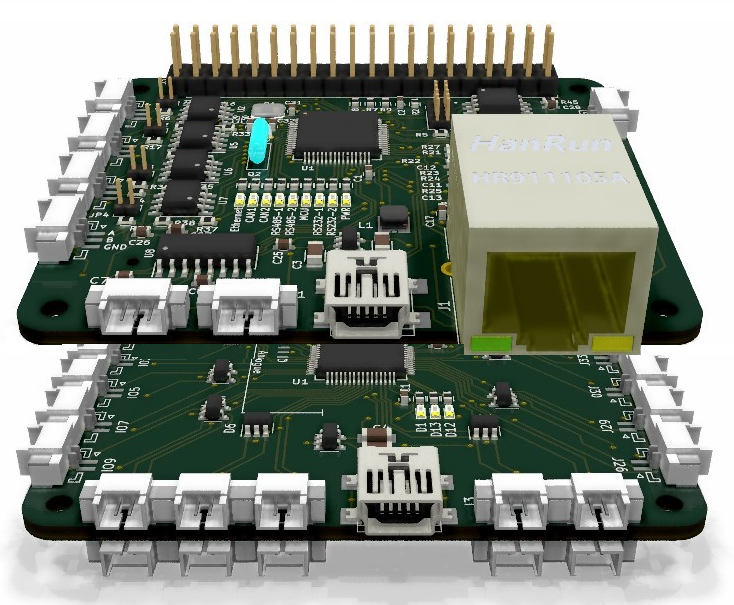One of the key features on the boards are that they assemble to a larger control system by just clicking them together. I have around 12 different boards by now and will start adding new boards and variants as I convert all my electronics from Target 3001 to KiCAD. These two board have 5V, Device Bus and CAN on the backbone. Device Bus is designed for higher speed data transfer and communication with Raspberry PI, while CAN is the primary control system.
My preference for CAN is due to its arbitration allowing a no-config device to device communication that in theory can stretch over several kilometers. My CAN loops are high speed and very short. CAN is also excellent for automotive vehicles like the one I am working on now.
One of the returning discussion I have is that these boards was designed as Raspberry PI Hat’s and use that form factor and pin layout on the backbone bus. The fact is that I so far had little usage for Raspberry PI. This is more a statement of how capable these MCU’s are + what they can achieve together.
Also, looking at the new STM32G.. series as well as STM32H.. series I might upgrade MCU as we move forwards. These MCU’s support CAN FD with much higher data transfer than CAN HS. STH32F405RG was chosen because of it’s high capability on IO, but STM32H753 is much better thought the smallest MCU is 100 pin. The G4 series is interesting because ST have started to improve IO capacity. The MCU’s are slightly faster version of the Cotex M4 and contains up to 3 CAN FD channels.
